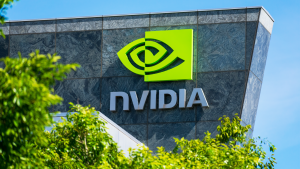2021 was a tremendous year for semiconductor stocks. The industry enjoyed a record growth spurt as a confluence of unusual events led to a golden age for the chipmakers. Demand surged as consumers were flush with cash and in a mood to buy electronics. The drive toward increased e-commerce, streaming and remote work also powered a lot of semiconductor spending at a corporate level. Throw in supply chain shortages and artificial capacity constraints as well — it all led to an earnings boom.
2022 has reversed those positive headwinds, and the semiconductor stocks have sold off. Many traders are probably tempted to buy the dip here, particularly as the tech stocks may have already hit bottom and the sector is now rallying. It’s easy to imagine how much money can be made owning the semiconductor stocks when they go back to their 2021 highs. However, the truth is that it will take a lot longer for most chips stocks to get their momentum back.
As a result, these six semiconductor stocks are still sells for the time being, though there is one industry player that looks positioned to avoid the current doldrums.
| NVDA | Nvidia | $161.20 |
| AMD | Advanced Micro Devices | $70.14 |
| WOLF | Wolfspeed | $81.37 |
| MRVL | Marvell Technology | $40.41 |
| ENPH | Enphase Energy | $317.05 |
| LSCC | Lattice Semiconductor | $69.45 |
| TXN | Texas Instruments | $173.75 |
Semiconductor Stocks to Sell: Nvidia (NVDA)

Nvidia (NASDAQ:NVDA) was a classic example of a great company at bad price. The price of Nvidia stock soared to previously unimaginable levels in 2020 and 2021.
The company had a trio of factors that all came together perfectly. Nvidia benefitted from the boom in cryptocurrency, which greatly raised demand for high-end graphics processing units (GPUs). Then, with folks stuck at home, people were willing to spend more for video cards for gaming. On top of that, Nvidia itself has a strong management team and was able to produce a variety of successes with its research and development efforts.
Nvidia still has the same good leadership and strong product focus. However, the other tailwinds are long gone.
Cryptocurrency has plummeted. Gaming demand returned to normal as the economy reopened. This has led to a sharp decline in the outlook for Nvidia’s earnings and growth rate for the foreseeable future. Combine that with a nosebleed valuation from last year, and it’s no surprise shares have fallen this far.
Even today, NVDA stock is still going for a stiff 38 times forward earnings. And the prognosis for earnings isn’t great, given the headwinds described above.
Advanced Micro Devices (AMD)

Advanced Micro Devices (NASDAQ:AMD), like Nvidia, is another company that has made excellent strategic moves which the market then blew out of proportion. CEO Lisa Su is a skilled leader, and AMD has made tremendous gains against chief rival Intel (NASDAQ:INTC) in recent years. There’s no taking away from that.
However, much of AMD’s recent growth was driven by the unprecedented demand for laptops and other consumer electronics during the pandemic. As people prepared to work and study at home, laptop sales soared. Now, demand has dropped, with PC sales falling off a cliff.
And, over the longer term, personal computing was a mature market with minimal growth prior to the 2020 disruption. Long story short, expect more difficult industry conditions where AMD and Intel fight tooth and nail for share in a flat to slightly declining market. That’s all well and good, but it doesn’t justify the sort of valuation we saw for AMD stock last year. Long story short, AMD shares have dropped a lot, but the stock is still up 600% over the past five years. That’s pretty frothy.
Wolfspeed (WOLF)

Wolfspeed (NYSE:WOLF) is a smaller semiconductor company looking to commercialize advanced silicon carbide technology. It was previously known as Cree and focused on LED lighting technologies. However, given the more promising opportunities elsewhere, it changed its name to Wolfspeed in 2021 and investors have rewarded the new focus.
The company’s appeal isn’t hard to see. The company provides silicon carbide solutions to automobile manufacturers. Key customers include Jaguar Land Rover (NYSE:TTM). Wolfspeed’s solutions can give electric vehicles better charging, which helps alleviate vehicle range anxiety. Wolfspeed also sees a variety of other functions for its silicon carbide technology and views it as “the future of semiconductors.”
However, Wolfspeed is much more of a future growth story than anything that can be justified by current results. The company has to dramatically increase production and ramp up commercial operations to go from promising story to a proven profitable business.
As such, this isn’t the sort of market in which to take a shot on Wolfspeed. For the time being, investors are rewarding companies with stronger profits and cash flows, not ones with a promising technological story but a less-than-robust set of operating results to back it up.
Marvell Technology (MRVL)

Marvell Technology (NASDAQ:MRVL) is a semiconductor company which primarily operates in the storage and networking markets. The company’s key customer segments include telecom, automakers, data centers and information technology providers, among others. Marvell is known for its rapid expansion; it has made several key acquisitions in recent years.
After years of trading sideways, Marvell shares surged in early 2020. This made sense. Demand for all sorts of networking and storage applications took off with people stuck at home. Device sales hit record levels, driving storage usage. Meanwhile, people needed faster internet connections at home, leading to more network spending.
These trends have now reversed. MRVL stock has also reversed, but it has farther to fall. Shares were around $25 at the start of 2020. They peaked at $90 last year and are now back to around $40.
The company is currently trading around 18 times estimated forward earnings, but those estimates have been rapidly falling, given the unrelenting bad news we’ve heard from many of Marvell’s customers. Given these issues, investors in MRVL stock won’t be feeling marvelous heading into 2023. In fact, the stock could easily retest that prior $25 level before finding support.
Enphase Energy (ENPH)

Enphase Energy (NASDAQ:ENPH) is a company which makes semiconductor-based microinverters. These convert energy at the individual solar module level. This is vital for solar panel installations to control and optimize the generation and storage of electricity.
Enphase has had tremendous success in recent years. Annual revenues grew from $316 million in 2018 to an estimated $2.3 billion for full-year 2022. The demand for solar power has grown, and Enphase was there with the right products to cash in.
However, this great ride could be slowing down. The Biden administration already approved relief for American solar power installers. That means that this catalyst is already played out and priced into the stock. The business is slowing down as well. Enphase is expected to grow revenues 67% for full-year 2022. But the growth rate is expected to decline to 36% next year and just 25% in 2024.
And while top-line growth has been tremendous, Enphase hasn’t turned all that much of its sales into earnings. ENPH stock is trading at an estimated 162x this year’s earnings and 70x 2023 earnings. That’s simply far too expensive for an industry like solar, which is heavily reliant on external factors for continued success.
Lattice Semiconductor (LSCC)
Lattice Semiconductor (NASDAQ:LSCC) is a chipmaker focused on low-power programmable units. The firm has a broad-based business and counts dozens of well-known customers among its revenue base. 50% of revenues come from industrial and automotive markets, 41% comes from communications and computing and 9% comes from licensing and consumer.
Lattice has reported strong earnings compared to the rest of its industry. This has led to LSCC stock leaping 40% in recent weeks. With that surge, Lattice shares are now trading at close to their highest point since January 2022.
This is all well and good for Lattice shareholders. You also can’t knock management’s deft handling of the current industry downturn. However, this rally has made LSCC stock exceptionally expensive compared to industry peers. Shares are trading at 65x trailing earnings and an estimated 36x 2023 earnings. That’s simply too expensive in this sort of market for a company that is expected to grow its topline revenues in the 10-15% range going forward.
Semiconductor Stock To Buy: Texas Instruments (TXN)

There’s a lot of bad news out there for semiconductor stocks. However, not all industry participants will face an equal burden from this downturn.
Texas Instruments (NASDAQ:TXN) is on a stronger footing because it manufactures analog semiconductors. These are chips which go into industrial applications such as automobiles, security and remote monitoring, and connected devices.
Analog chips are a slower-moving market within semiconductors. This is because analog chips tend to be for more niche applications which have less competition. Analog chip designs also tend to have a far longer working lifespan than other varieties. This means that Texas Instruments tends to earn higher and more durable returns on its investments than peers.
The company is laser-focused on increasing free cash flow per share. This, in turn, leads to large share buybacks and aggressive dividend increases with the firm’s prodigious cash flows. While fast-moving semiconductor fields such as chips for smartphones and laptops may see a prolonged downturn, Texas Instruments’ steadier business should keep investors in the green in 2023.
On the date of publication, Ian Bezek held a long position in TXN stock. The opinions expressed in this article are those of the writer, subject to the InvestorPlace.com Publishing Guidelines.